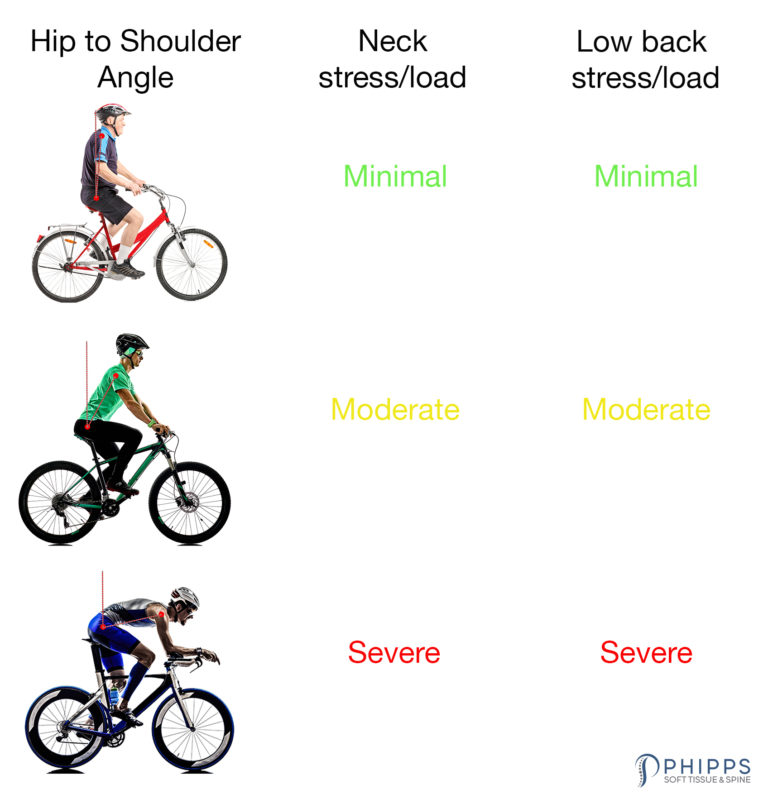3 Quick Tips for a Pain Free Bike Season
1. Minimize shoulder to hip angle
The shoulder to hip angle (HS angle) is an imaginary line drawn from the hip to shoulder that increases as your shoulders drop forward. Time trial and road bikes will have a larger HS angle to maximize aerodynamics but this comes at a cost to the rider. As the HS angle increases, so does the stress/load on your neck and low back increasing risk of pain. Recreational bike riders should buy a bike with minimal HS angle and ideally have their shoulders positioned directly above their hips to minimize injury risk to their neck and low back. Racing/competitive bike riders can reduce HS angle to reduce the stress by working with their local bike shop to get a proper fit. A slightly less aggressive position may have minimal impact on aerodynamics, but significantly reduce the stress on the neck and low back and add years to your competitive career.

2. Take a break
Riding a bike is like sitting at a computer with very poor posture. Office workers are plagued with low back and neck pain because sitting for extended periods of time causes continuous stress/load on those regions. General advice to office workers is to take micro breaks every 20 minutes and a slightly longer break every hour. These short breaks encourage blood flow and reduce stress/load on your neck and low back. Recreational riders should take a break every 30 minutes to give their low back and neck a break. Racing/competitive bike riders should limit the time they spend in the aero position and longer rides that take time to get off their bike.
3. Adhesion free muscles
Keeping your muscles adhesion free is vital to staying pain free on the bike. Adhesions form from overuse and unfortunately, biking, creates the perfect environment for adhesion formation. Adhesion will act like glue in your muscle making them less flexible and weaker. Biking with adhesion will make an already high stress/load on your low back and neck even worse, resulting in accelerated pain and injury. If you don’t have pain (once you have pain, you need to be evaluated by a soft tissue specialist) or find that your low back and neck are stiff, then check out the home mobility screens below. Muscle adhesion is the most common reason for failing a mobility screen test. If you already have pain while biking or have failed one of mobility screens, then use the contact page or call 716-629-3100 to schedule a consult with Dr. Phipps. Dr. Phipps is a soft tissue specialist and an expert at diagnosing and treating adhesion and other overuse related injuries that occur from riding a bike.
Mobility Screens:
Low back
Neck
Elbow/Hand
Shoulder
*Please note that every patient is different. The content and tips displayed on this page are for educational purposes only, and do not substitute for medical advice. Please consult with a medical or healthcare provider, such as Dr. Phipps, for specific diagnosis and treatment advice.
Williamsville, NY 14221 Chiropractor
